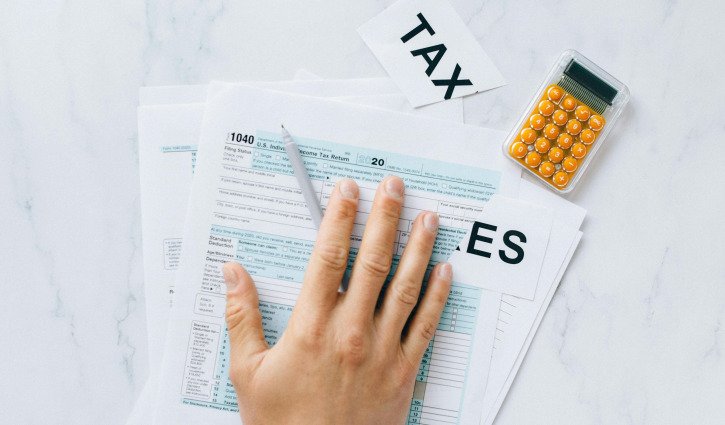With the end of the financial year rapidly approaching, now is the perfect time to capitalise on the tax considerations available to all Australian investors. Legitimately minimising the tax you pay on shares (or any asset class) is something every investor should strive for.
With that in mind, Azzet has added to the guide to capital gains tax on shares we shared with readers in March, with some additional insights into expensive mistakes you need to avoid.
We've also provided some often overlooked insights into cutting tax by making deductible super contributions.
Avoid tax loss harvesting
Tax rules allow you to offset any capital losses against capital gains realised [on shares], and if you’ve owned the shares for over a year, you’ll receive a capital gains discount of 50%.
However, what the Australia Tax Office (ATO) doesn’t deem as kosher is the quick sale and repurchase of shares with the singular purpose of minimising tax.
Remember, it’s perfectly acceptable to cull deadwood stocks that have been diluting your overall share portfolio value for some time.
But what the ATO takes a dim view of is selling shares and then buying the same or [similar] amount back within a relatively short timeframe.
The ATO may deem these trades tantamount to tax loss harvesting - aka a ‘wash sale’ – if it’s evident you reduced and then re-entered that stock merely to crystallise a capital loss.
You could get pinged
The ATO now has sophisticated data analytics to monitor both on- and off-market share sales.
As a result, you need to be mindful that buying and selling any ASX shares around the end of June and the start of July may get you pinned on the ATO's radar.
Whether you intended to make a ‘wash sale’ or not, you may still have some explaining to do with the ATO if you’re deemed to have enjoyed an unfair financial advantage.
In previous market updates, the ATO has offered the following guidance:
"A wash sale is different from normal buying and selling of assets because it is undertaken for the artificial purpose of generating a tax benefit for the current financial year," the ATO warned investors.
"The taxpayer disposes of and reacquires the asset for the deliberate purpose of realising a capital gains loss and obtaining an unfair tax benefit."
Two specific examples
If that appears a little vague, here are two examples of wash sales that could get you into trouble:
A) Where a taxpayer enters into an arrangement to sell and re-purchase an asset at substantially the same price, or just before or at the time of the sale of an asset. B) Purchasing financial instruments that deliver the same financial benefits that arise from the previous direct ownership.
Remember, there’s no hard and fast time frame within which you can be deemed to have avoided a ‘wash sale’.
The litmus test for the ATO will be whether your decision to sell was motivated by a tax benefit outcome.
Similarly, while there’s nothing wrong with off-market transfers, the ATO make get suspicious if a transfer was backdated with the express purpose of triggering a favourable tax outcome.
The ATO may also suspect ‘monkey business’ if you sell shares in your own name to a family trust - or spouse to - to trigger a capital loss which is then used to offset a capital gain.
Making the most of catch-up contributions
Meanwhile, the four-week lead up to 30 June gives you ample time to contemplate legitimately cutting any capital gains tax (CGT) by making catch-up contributions to super.
While this isn’t rocket science, careful deployment of this strategy often requires industry professional guidance.
How it works
Assuming you’re under 67 and have less than $500,000 in super (at 30 June last year) you might be able to utilise unused tax-deductible catch-up concessional contributions as far back as 2019.
The devil is in the details, but by giving rise to a [potential] $100,000-plus personal tax deduction you may wipe out some CGT.
The concessional contribution cap is $30,000, up from $27,500 in 2023-24.
But if you didn’t use the full $27,500 concessional contribution cap in each of the last three financial years (or the $25,000 cap in the two years before that), any unused amounts may be contributed this year, giving you a bigger deduction and tax savings.
Remember, unused cap amounts can be carried forward for up to five years, so this financial year is the last year to use any unused amount from 2019-20 – use it or lose it.
Given the complex nature of super tax provisions, it always pays to seek financial advice.
That way you’ll maximise concessional or non-concessional contributions, or potential contributions to a spouse without unwittingly falling foul of the regulations, which can result in penalties.
A re-contribution strategy
You can also ask your adviser about a re-contribution strategy, which subject to your eligibility could see you withdraw up to $360,000 tax-free and re-contribute it as a non-concessional contribution, on which there is no entry tax.
The benefit of doing that is conversion of a major slice of the taxable component of your [super] fund to non-taxable, hence alleviating any [non-dependent] beneficiaries from paying major taxes on the super fund you leave behind.
This article does not constitute financial or product advice. You should consider independent advice before making financial decisions.



